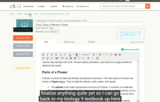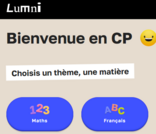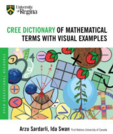
This tutorial walks you through how to customize your own interactive textbook using CK12 materials.
- Subject:
- Math
- Science
- Material Type:
- Activity/Lab
- Textbook
- Date Added:
- 10/24/2024

This tutorial walks you through how to customize your own interactive textbook using CK12 materials.

Le CP, ou cours préparatoire, est la première classe de l’école élémentaire dont les objectifs prioritaires sont de permettre aux élèves d’apprendre à lire, à écrire et à compter. Dès le CP, les élèves découvrent également l'apprentissage d'une langue vivante (étrangère ou régionale), des enseignements pour questionner le monde, des enseignements artistiques (arts plastiques et éducation musicale), une éducation physique et sportive et un enseignement moral et civique.
Ce cours est suivi en France donc les niveaux sont élevés. Plutôt pour la 3e-6e içi.

Students use washable paints, markers, and construction paper to illustrate a month from the traditional Cree Calendar
Students will be able to:
illustrate a month from the traditional Cree calendar;
demonstrate an understanding of the changes, cycles and patterns that occur in nature through words and images;
draw/paint geometric and organic shapes;
create the illusion of depth in space using size;
connect personal life experiences to their artworks.

The Cree Dictionary of Mathematical Terms with Visual Examples provides Cree equivalents of 176 mathematics terms and their definitions in English. The visual examples mainly contain Indigenous elements. The Dictionary was reviewed by Elders, Indigenous Knowledge Keepers and Cree-speaking educators.

In this lesson, students go further into the collection and interpretation of data, including cleaning and visualizing data. Students first look at the how presenting data in different ways can help people to understand it better, and they then create visualizations of their own data. Using a the results of a preferred pizza topping survey, students must decide what to do with data that does not easily fit into the visualization scheme that they have chosen. Finally, students look at which parts of this process can be automated by a computer and which need a human to make decisions.

In this lesson students get practice making decisions with data based on some problems designed to be familiar to middle school students. Students work in groups discussing how they would use the data presented to make a decision before the class discusses their final choices. Not all questions have right answers and in some cases students can and should decide that they should collect more data. The lesson concludes with a discussion of how different people could draw different conclusions from the same data, or how collecting different data might have affected the decisions they made.

Students begin the lesson by looking at a cake preference survey that allows respondents to specify both a cake and an icing flavor. They discuss how knowing the relationship between cake and icing preference helps them better decide which combination to recommend. They are then introduced to cross tabulation, which allows them to graph relationships to different preferences. They use this technique to find relationships in a preference survey, then brainstorm the different types of problems that this process could help solve.

In this lesson students look at a simple example of how a computer could be used to complete the decision making step of the data problem solving process. Students are given the task of creating an algorithm that could suggest a vacation spot. Students then create rules, or an algorithm, that a computer could use to make this decision automatically. Students share their rules and what choices their rules would make with the class data. They then use their rules on data from their classmates to test whether their rules would make the same decision that a person would. The lesson concludes with a discussion about the benefits and drawbacks of using computers to automate the data problem solving process.

To conclude this unit, students design a recommendation engine based on data that they collect and analyze from their classmates. After looking at an example of a recommendation app, students follow a project guide to complete this multi-day activity. In the first several steps, students choose what choice they want to help the user to make, what data they need to give the recommendation, create a survey, and collect information about their classmates' choices. They then interpret the data and use what they have learned to create the recommendation algorithm. Last, they use their algorithms to make recommendations to a few classmates. Students perform a peer review and make any necessary updates to their projects before preparing a presentation to the class.

In this lesson, students look at how data is collected and used by organizations to solve problems in the real world. The lesson begins with a quick review of the data problem solving process they explored in the last lesson. Then students are presented three scenarios that could be solved using data and brainstorm the types of data they would want to solve them and how they could collect the data. Each problem is designed to reflect a real-world service that exists. After brainstorming, students watch a video about a real-world service and record notes about what data is collected by the real-world service and how it is used. At the end of the lesson, students record whether data was provided actively by a user, was recorded passively, or is collected by sensors.

In the first lesson of the data unit, students get an overview of what data is and how it is used to solve problems. Students start off with a brief discussion to come to a common understanding of data. They then split into groups and use a data set to make a series of meal recommendations for people with various criteria. Each group has the choices of meal represented in a different way (pictures, recipes, menu, nutrition) that gives an advantage for one of the recommendations. Afterwards, groups compare their responses and discuss how the different representations of the meal data affected how the students were able to solve the different problems.

In this lesson students create their own system for representing information. They begin by brainstorming all the different systems they already use to represent yes-no responses. They then work in small groups to create a system that can represent any letter in the alphabet using only a single stack of cards. The cards used have one of 6 different possible drawings (6 animals, 6 colors, etc.) and so to represent the entire alphabet students will need to use patterns of multiple cards to represent each letter. Students create messages with their systems and exchange with other groups to ensure the system worked as intended. In the wrap-up discussion the class reviews any pros and cons of the different systems. They discuss commonalities between working systems and recognize that there are many possible solutions to this problem and what's important is that everyone use the same arbitrary system to communicate.

In this lesson students learn to use their first binary system for encoding information, the ASCII system for representing letters and other characters. At the beginning of the lesson the teacher introduces the fact that computers must represent information using either "on" or "off". Then students are introduced to the ASCII system for representing text using binary symbols. Students practice using this system before encoding their own message using ASCII. At the end of the lesson a debrief conversation helps synthesize the key learning objectives of the activity.

In this lesson students learn how computers represent images. To begin the lesson they consider the challenge of turning all the complexity of vision into a binary pattern. Through a series of images showing how this transformation is made students are introduced to the concept of splitting images into squares or "pixels" which can then be turned on or off individually to make the entire image. Students then do a short set of challenges using the Pixelation Widget in order to draw black and white images. Puzzles are designed to call out some of the challenges of representing images in this way. In the wrap up students make connections between the system for representing images and the system for representing text they learned in the previous lesson.

In this lesson, students learn about the binary number system. With a set of cards that represent the place values in a binary (base-2) number system by a collection of dots, students turn bits "on" or "off" by turning cards face up and face down, then observe the numbers that result from these different patterns. Eventually, students extend the pattern to a generic 4-bit system.

Students have a discussion on the different levels of security they would like for personal data. Once the class has developed an understanding of the importance of privacy, they learn about the process of encrypting information by enciphering a note for a partner and deciphering the partner's note. The class concludes with a discussion about the importance of both physical and digital security.

In this lesson, students use all three types of binary representation systems (ASCII characters, binary number, and images) to decode information in a record. After seeing a series of bits and being asked to decode them, students are introduced to the idea that in order to understand binary information, they must understand both the system that is being used and the meaning of the information encoded. They then decode a record representing a pet based on a given structure.

In this lesson students design a structure to represent their perfect day using the binary representation systems they've learned in this chapter. Students will first write a short description of their perfect day and then review with a partner to identify the key pieces of information they think a computer could capture. As a class students will decide how a punch card of bytes of information will be interpreted to represent those pieces of information. Students will then use the ASCII, binary number, and image formats they have learned to represent their perfect days. Students then trade punch cards and try to decode what the other student's perfect day is like. The lesson ends with a reflection.

In this lesson, students use the problem solving process from earlier in the course to solve a data problem. After reviewing the process, the class is presented with a decision: whether a city should build a library, pet shelter, or fire department. Students work in teams to collect information on the Internet to help them decide what should be built, then use this information build an argument that will convince the city council of their choice. They then map what they have done to the problem solving process that they have been using throughout the course, comparing the general problem solving process to its specific application to data problems.

Students start by using booleans to compare the current value of a sprite property with a target value, using that comparison to determine when a sprite has reached a point on the screen, grown to a given size, or otherwise reached a value using the counter pattern. After using booleans directly to investigate the values or sprite properties, students add conditional _if_ statements to write code that responds to those boolean comparisons.